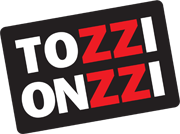Cryptocurrencies can be exchanged for traditional currency, including Canadian dollars, and can be used in brick and mortar stores or online wherever they are accepted. As they
are exchanged anonymously, cryptocurrencies are often used in the underground economy to purchase illegal goods and services. Though Canadians increasingly rely on electronic banking, money’s physical presence continues to be significant. The process of monetary evolution that began several thousand years ago is still under way. The exact direction it will take is impossible
to predict, but some elements of the functions of money as a store of value, measure of value and medium of exchange, will be retained. It consists of M-2 and non-personal term deposits, including certificates of deposit held by business corporations.
From day to day, the value of the Canadian dollar is affected by news of important economic events, changes in expectations about Canada’s economic prospects, and government actions. Over longer periods, the dollar’s value is related to the cost of Canadian https://traderoom.info/ goods relative to comparable foreign goods. When Canadian prices rise (inflation) faster than foreign prices, the dollar’s value falls relative to foreign currencies. If Canadian prices rise more slowly than foreign prices, the dollar’s value rises.
- Online banking is a convenient way to pay using secure websites operated by banks and other financial institutions over the Internet.
- Canada’s monetary system is closely linked to the international system, which has undergone serious crises since the Great Depression of the 1930s.
- In 1832, an anonymous halfpenny of English design appeared and was extensively imitated in brass.
- Objects made of copper, precious metal, furs and other resources formed the basis of an early monetary system.
Polymer notes last up to four times longer than paper, so they have less impact on the environment. They are also recyclable and can have more security features than paper notes. For bank notes, the Bank’s Currency Department works hard to find images that best represent Canada and Canadians. The development of the current $10 note in 2018 was the first time Canadians were consulted directly about who should appear on a bank note.
Notes
Since then the Canadian dollar has fluctuated from as high as US$1.08 in 2007 to as low as US$0.62 in 2002. The next widest definition of money supply, M-2, includes M-1B plus non-chequing personal term and savings deposits and some corporate chequable and non-chequable notice deposits. Money consists of anything that is generally accepted for the settlement of debts or the purchase of goods or services. The evolution of money as a system for regulating society’s
economic transactions represented a significant advancement over earlier forms of exchange based on barter, in which goods and services are exchanged for other goods or services. Canadian money has its roots in the Indigenous wampum belts of the East, the early currencies of European settlers and the influence of the United States.
CAD
While he is certainly celebrated for founding the Canadian nation, he also faces heavy criticism for his general attitudes towards Indigenous Canadians and the establishment of residential schools. His checkered past has resulted in the introduction of a second $10 bill that features the face of Viola Desmond, a previously lesser-known and overlooked civil rights leader in Canadian history. In 1874, he ran for a seat in Parliament with the Liberal Party of Canada and won handily.
Natural resources are an essential part of the economy of Canada; hence, its currency appears to vary according to the price of commodities around the world. The US dollar is the commonly used benchmark for the Canadian dollar in the foreign exchange market and USD/CAD is one of the most traded currency pairs. The government affects the value of the Canadian dollar in two ways. The government can change the value of the Canadian dollar over short periods by buying or selling Canadian dollars in the market, a process known as foreign exchange intervention. A more long-lasting effect can be achieved by using monetary policy. In this case, the government modifies Canadian interest rates, changing the attractiveness of investing in Canada (see Foreign Investment).
Unveiled at the Canadian Numismatic Association convention in Niagara Falls, Ontario, in July 2006, the mint mark was a reproduction of the Royal Canadian Mint logo. The 1947 maple leaf 5¢, 10¢, and 25¢ do not have notable varieties and are all web traderoom fairly common coins. King George V died on January 20, 1936, and was succeeded by King Edward VIII. Because his abdication occurred before production of any Canadian coinage with his likeness could commence, no Canadian coins bear his image.
All of Canada uses the Canadian dollar, however certain retailers throughout the country will accept the US dollar as a form of payment for goods. We highly suggest you to use the local currency to pay for goods and services. Several urban legends and other false information have circulated regarding Canadian coinage. The coin will retain its full value even if the red poppy has worn off or been removed; however, it is now expected that fully coloured specimens will become collectible in the future. Canadian coins have medallic orientation, like British or euro coins, and unlike U.S. coins, which have coin orientation. This new material makes them considerably more resistant to damage.
Historical Composition of the Loonie
The penny continues to be legal tender, although they are only accepted as payment and not given back as change. The first dime (10¢ coin) came into circulation in 1858, the first quarter (25¢) arrived in 1870, and the Royal Mint (now Royal Canadian Mint) issued the first Canadian-minted coin in 1908. The penny (1¢) was introduced in 1920, and the nickel (5¢) came into circulation in 1922. The first “loonies” ($1) were minted in 1987, replacing the paper dollar,
followed by the “toonie” in 1996, a $2 coin that replaced the paper bill.
Spanish dollar banknotes were printed, including a $4 denomination to conform to the official value of
the pound. CAD is the official currency of Canada and is considered to be a benchmark currency, meaning that many central banks across the globe keep Canadian dollars as a reserve currency. The Canadian dollar has been in use since 1858 when the Province of Canada replaced the Canadian pound with its first official Canadian coins. The Canadian dollar was pegged to the U.S. dollar at par using the gold standard system of one dollar equaling 23.22 grins of gold.
Canada’s monetary system always paralleled that of the US, with some notable differences. In 1870, the Dominion government issued shinplasters (25¢ government notes) to counteract the effect of an overabundance of American silver coinage in Canada that was worth only 80¢ against the Canadian dollar at that time. The BOC released a new series of banknotes in an effort to fight counterfeiting and stopped printing paper currency. The Frontier Series—the seventh series for Canada—is made entirely out of polymer, a plastic substance that gives the currency added security features. The series was first introduced in June 2011; the $100 bill was the first to be put into circulation that same year. The remaining bills, the $50, $20, $10 and $5, were all released over the next two years.
Canada is the world’s tenth largest economy (2021) and has an independent monetary policy. The Bank of Canada is the entity responsible for overseeing the pursuit of the policy in ways that it feels are best suited to Canada’s economic circumstances and inflation targets. The BOC was founded in 1935, and its head office is in Ottawa, Canada’s capital. The BOC is led by a governing council, the policy-making body of the bank, which is made up of a governor, a senior deputy governor, and four deputy governors. The Canadian dollar is usually measured in comparison to the American dollar. It is almost always worth less, but the exact value can vary quite a bit depending on what’s going on in the world.
Since taking it out of circulation, retailers round cash transactions to the nearest five cents. The symbols on the $1 Canadian coin is how it received the nickname “loonies,” from the aquatic bird appearing on the backside. The $2 Canadian coin has a polar bear and is called twonies or toonies, based on the word loonie and the word two. Once you come back to the states, perhaps after enjoying the Toronto International Film Festival, Niagara Falls, or Banff National Park, you’ll most likely have some loose Canadian loonies and toonies rattling around in your pockets. Even their coins are beautiful and easy to identify, which is definitely helpful, as there are 6 denominations for those as well.
As such, the Spanish dollar was worth slightly more than the U.S. dollar, and likewise, the Newfoundland dollar, until 1895, was worth slightly more than the Canadian dollar. The decimal system was first adopted by the Province of Canada (the united colonies of Lower and Upper Canada) in 1858, based on a dollar equal in value
to the American dollar. American silver had become very plentiful and trade with the US made it necessary to adopt a decimal system. New Brunswick and Nova Scotia followed in 1860; Newfoundland, in 1863; PEI, in 1870.
Chromium-plated steel was used for the 5¢ in 1944 and 1945 and between 1951 and 1954, after which nickel was readopted. The first coins of the Dominion of Canada, issued in 1870, were silver 5-, 10-, 25- and 50-cent pieces. Silver coins bore the value and date in a crowned maple wreath on the reverse; the cent bore the value and date in a circle enclosed by a continuous maple vine.

